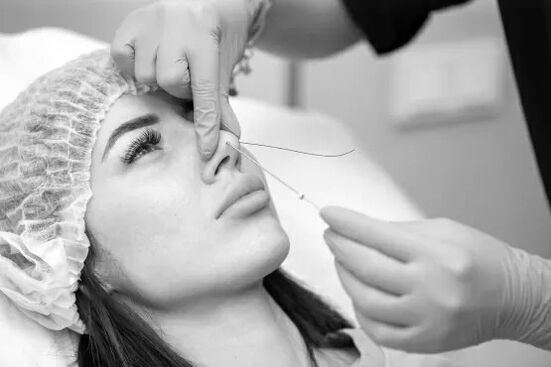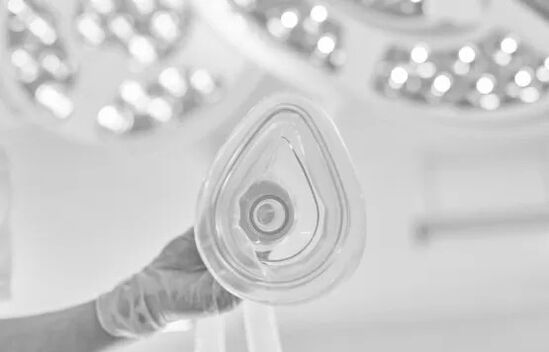Every third person on the planet has thought of making a nose at least once. 70% of patients choose rhinoplasty because they are 100% dissatisfied with their appearance and want to solve aesthetic problems: remove the hump, make the nose thinner, smaller, smoother. 30% of patients decide to have rhinoplasty for medical reasons - nasal injury, difficulty breathing, deviated nasal septum or frequent sinusitis.
Problems with the shape of the tip of the nose are not uncommon. But don't be shy, everything can be fixed. If figure defects can be corrected with clothing, diet or exercise, you should contact a plastic surgeon to correct your nose or lips.
In this article we will talk about all the features of the procedure, preparation for plastic surgery and other important stages.
Indications and contraindications: medical, aesthetic, indirect, absolute

Rhinoplasty is a surgery that takes 1-2 hours. As a result, the patient's appearance changes and the face becomes more attractive. Before taking the plastic, it is necessary to agree with the doctor on all points and thoroughly prepare for its implementation: get tested, diet, give up smoking and alcohol at least a week before surgery.
Tips for surgery
Tips for the procedure are congenital and acquired.
Congenital indications for plastic surgery are various aesthetic and physiological defects: fork-shaped, forked, thick or swinging tip, displacement to the side, very wide or narrow holes.
Surgery may be needed after injuries or illnesses caused by a curved nose, when it is difficult to breathe due to changes in body structure or age (aging of the skin). The above indicators are considered obtained.
You should consult a surgeon to restore or straighten the tip of the nose, and if surgery is needed, cartilage density, skin and tissue thickness, nose length, width, and other factors will be taken into account. The patient's wishes are always taken into account and implemented as much as possible, but the final decision is made with the doctor, as the removal of the cartilage can lead to deterioration of health.
Before the operation, you should examine the nasal cartilage and make sure that the skin in the respiratory tract is healthy - there are no signs of inflammation or infection.
Contraindications to surgery
Correction of the tip of the nose is a serious procedure, it should be approached consciously. What are the contraindications to the procedure?
- Age.The operation is performed from the age of 18. By this age, tissue formation is complete. However, surgeons recommend correcting the tip of the nose between the ages of 20 and 35. Bone and cartilage formation, skin elasticity and recovery after the procedure is active.
- Blood clotting problems.When a patient has a weak blood clot, the risk of surgery is higher than usual, so it is better to refrain from doing it.
- Exacerbation of chronic diseases.Surgeons do not recommend surgery during exacerbations. It is better to wait and get examined until your health condition returns to normal. Only if there are positive test results can a decision be made about rhinoplasty.
- Viral diseases, infections, inflammation.It should be remembered that if there is at least a minimal health problem, it is better to postpone the operation until complete recovery.
- Oncology.Rhinoplasty is contraindicated in oncology patients.
- Menstruation.The operation is contraindicated during menstruation. It is desirable to make the correction within two weeks after the end of menstruation.
Plastic surgery during pregnancy or lactation is also contraindicated. Prior to surgery, the patient should be examined and tested to ensure proper preparation for rhinoplasty.
Other correction ways. Why rhinoplasty is the most reliable method

Surgeons use different surgical techniques to correct the nose, depending on the client's wishes and the patient's expected outcome. However, you can find other ways to straighten the tip of the nose.
Clamps
You can find so-called "nose clips" in online stores. The manufacturers claim that when you apply the corrective 2-3 times a day, the effect will be noticeable compared to surgery. But, of course, this is far from the truth. To correct the nose, no clip or other device from false experts will work. If there is any effect, it will be short-lived - 2-3 weeks, and the correction is insignificant.
Exercises
There are a number of exercises that allow you to correct the shape of the face. These exercises are useful for maintaining muscle tone, cheekbones, and a pair of jaws, but will not work to correct cartilage shape. The effect lasts for 2 weeks after systematic training.
Correction by topics
The threading technique is performed by a specialist with a special needle through micro holes. Specially designed threads are inserted into the skin of the nose, which forms a frame. The strings are placed through small holes and the frame keeps it in place. Two days later, the doctor removes the ends of the ropes and the patient sees the final result, which lasts about 3 years.
Use of hormonal drugs
You can also take a course of hormonal medications to correct the tip of the nose. First of all, you should consult an endocrinologist. If there are no contraindications, a hormonal drug can be given. This procedure is performed to remove excess tissue and lift the tip. You will need to go through a course of procedures that will last between 2 and 3 weeks for correction. It should be noted that the drugs have a temporary effect - from 3 months to 2 years, depending on the selected drug.
Surgical correction
According to experts, rhinoplasty is the most reliable and effective way to correct. Unlike previous methods, rhinoplasty gives a lifelong result. The procedure lasts 1-2 hours under local or general anesthesia. The main advantages of the operation:
- all possible correction options (lower or raise the tip, lower, straighten or narrow the tip of the nose);
- elimination of respiratory problems;
- lifelong result;
- correction of injuries, birth defects.
3 ways to perform the operation. What is the difference
There are several types of rhinoplasty: classic closed, open and hybrid methods. Surgeons resort to various types of plastic surgery depending on the outcome, the shape of the nose, the condition of the bone and cartilage tissue, and other factors.
A feature of classic closed plastic surgery can be used to correct the dorsum of the nose, but straightening the tip will be more difficult than using the open one. In this method, incisions are made inside the nasal passages, and access to the tip is possible only when the cartilage is removed into the incision. But there are also positive aspects - there are no visible scars after the operation. Closed plastic is suitable for removing a shoot or straightening bone tissue in case of curvature.
In open surgery, the surgeon makes an additional incision between the nostrils. This helps to better reach the nasal structures and provide ample opportunities to change the size and shape. After the procedure, the wound will be almost invisible and small. In this way, you can change the tip of the nose more effectively (compared to the closed method). The disadvantage is the formation of a small sore on the outside of the nose and a longer recovery time. The scar becomes smaller a few months after the operation and can be removed with the use of additional treatments and creams recommended by the surgeon if necessary.
Because of the shortcomings of the above methods, surgeons developed a combined plastic technique. When using it, incisions are made inside the nose, which is characteristic of both methods, but unlike the open method, there is no external incision in the skin.
The combined method (also called "hybrid") is designed with all the advantages and disadvantages of closed and open methods.
The main advantages are to change the structure of the nose as much as possible and not leave visible scars. Recovery after the combined method occurs within 2 weeks and there are no visible marks on the skin.
When using the hybrid method, the surgeon has the opportunity to make adjustments during the operation, as well as to manage the desired result, avoiding the possibility of excessive or insufficient correction. The combined method has only one drawback - it is more technically complex.
A few words about something important. Preparing for surgery

You need to be trained before rhinoplasty. You should consult a plastic surgeon to discuss the changes you want. The surgeon examines the nose and explains the reality of achieving the desired result. During the consultation, questions about limitations, operation, features of preparation, followed by rehabilitation and possible complications are discussed.
The patient should be examined before surgery to make sure there are no contraindications and to undergo the following tests.
- Blood for HIV infection and hepatitis C and B;
- clinical blood test;
- blood biochemistry;
- laboratory analysis of urine;
- prothrombin index analysis;
- fluorography;
- electrocardiography;
- test for tumor markers;
- radiograph.
In addition, the patient should listen to the doctor's recommendations and follow them. Avoid alcohol for a week before the operation, stop smoking, do not use blood thinners, do not drink water or eat for five hours before the procedure. It is important to avoid active entertainment and walking in the hot sun a day or two before rhinoplasty.
About the course and main stages of the operation

Rhinoplasty is performed under general or local anesthesia. The choice of type of anesthesia depends on the wishes of the client, the characteristics of the operation and the method used by the plastic surgeon to perform it. The patient can always share his wishes regarding anesthesia, but the final decision rests with the doctor. The process and quality of rehabilitation after rhinoplasty also depends on the choice of type of anesthesia.
Local anesthesia is used in the case of a small correction of the nose with hormonal injections, fillers or ropes. These correction methods do not cause severe pain, so in most cases general anesthesia is not required. However, this type of anesthesia is not used in rhinoplasty when the surgeon needs to touch the nasal or cartilage bones.
In most cases, general anesthesia is used by the surgeon. This type of anesthesia allows you to completely avoid pain during the operation, and the patient will have no memories of the operation.
The operation takes 1-2 hours. After anesthesia, the surgeon makes an incision in the skin or mucous membrane. Depending on the patient's wishes and the specific situation, the doctor chooses an open or closed method for the operation.
During rhinoplasty, the doctor separates the soft tissues of the nose from the bone and cartilage in the nasal cavity. It then moves the cartilage and bone fragments, modeling a new nose shape. After the manipulations, the plastic surgeon applies absorbable sutures to the skin or mucous membranes, depending on the location of the incision. The next step is to tampon the nasal passages with large gauze pads. The final stage of the operation is the application of a fixation plaster.
The type of incision is chosen by the surgeon depending on the structure of the nose, the complexity of the procedure, and the surgeon's work preferences. The cut can be axial, vertical, oval or angular.
Rhinoplasty itself is performed in three main ways: open, closed and combined. The characteristics of each of the methods are described in the "Types of operations" section
The choice of plastic surgery is presented directly to the patient, but doctors recommend choosing the least traumatic method. Surgeons say the least traumatic methods are closed and combined because there are fewer incisions when used and recovery is faster after surgery.
Surgeon's recommendations in the postoperative period. How to prevent complications

Rehabilitation after surgery is on average between 20 and 25 days. If the rhinoplasty was performed under general anesthesia, the patient should be hospitalized 24 hours after surgery.
For three days after surgery, gauze or cotton swabs should be in the nasal cavity to ensure immobility of the new forms and to prevent swelling. The suture is removed in 5-8 days after plastic surgery (depending on the speed of healing). After a week or 10 days, the patient is removed from the cast, hematomas and swelling gradually begin to disappear.
Doctor's recommendations in the postoperative period:
- Lie on your back, make sure you use a high pillow.
- To reduce the level of discomfort associated with dry mouth (as one of the possible consequences of the procedure), use special solutions or pastes to soften.
- Do not abuse alcohol and smoking.
- Avoid trips to baths, solariums, saunas.
- Do not wear glasses.
- It is forbidden to engage in physical activity.
- Temporarily stop eating hot foods and drinks.
- Do not touch, knead or feel your nose.
Possible complications
Complications after rhinoplasty are rare. Some appear immediately after correction, while others occur in later stages of improvement. Natural complications include edema and bruising. Signs of external swelling disappear one week after plastic surgery, deep swelling disappears after six months. Difficulty breathing disappears spontaneously 10 days after surgery.
To protect yourself from possible complications, it is important to choose a specialist, clinic carefully and give full information about your health condition, injuries or diseases, if any. The final outcome of the operation also depends on strict adherence to the doctor's recommendations during the rehabilitation period.
The result
Rhinoplasty is used by both women and men of all ages. Surgeons advise not to delay surgery to correct the tip of the nose at a young age. It is important to undergo a full course of examination to make sure there are no contraindications to plastic intervention. The most popular indications for rhinoplasty:
- straightening of the tip of the nose (large, sharp or round);
- a long nose;
- wide bridge of nose;
- lift or narrow the tip of the nose;
- elimination of asymmetry;
- shortness of breath;
- elimination of the consequences of injury or poor quality rhinoplasty;
- straightening the tip of the split nose.
If the patient has a small defect, the operation is performed under local anesthesia. In other cases, in 90% of cases, rhinoplasty is performed under general anesthesia. The procedure itself lasts between one and two hours. The method of conducting the procedure (open or closed) is based on many factors. This includes the complexity of the nasal defect and the wishes of the client. But the final decision rests with the plastic surgeon.
The quality and end result of rhinoplasty depends directly on the choice of a specialist and clinic, so a comprehensive approach is needed.




















